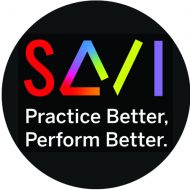That’s it, folks – the single most powerful piece of advice I can give a singer attempting to interpret a song in performance.
Say the words!
Time and again, my students have told me that when they’re feeling stumped by a song, lost in a fog of moods and sounds and prior interpretations that present an overwhelming array of options, the simple act of speaking the lyric of a song aloud has been enormously beneficial.
I’m not talking about mechanical, robotic recitation. I mean, say them in a way that seeks to make sense of them, to discover their content and what they were intended to communicate. Speak them like a monolog, without regard for the rhythms and patterns the the musical setting imposes on them. Speak them with emotion, as if you were having a conversation with somebody.
It usually helps to write them out, separate from the music, and without regard for the line breaks that make them look like verse on the page. Write them out one phrase at a time. Put each phrase on its own line on the page, and every time you detect the beginning of a new thought or impulse, begin a new line.
Even better, get yourself some index cards, and write each phrase on its own card. For each new line of the song, ask yourself, is this a continuation of the previous phrase, or is it a new thought? If it’s a new thought, what makes it different from the previous thought? If it’s a new thought, it goes on a new card; if not, continue writing on the current card. It’s that simple.
Some of your cards may only have a word or two on them. That’s fine.
Now read the text of your song, starting with the first card. As you get to the end of the text on your first card, move it to the left of the pile of cards so that you can see the phrase you’ve completed and the next phrase side by side, the first phrase on the left, the next on the right. Use this as an occasion to notice what’s different about the two cards, as well as what’s the same. For the purposes of acting the song, the differences are more important than the similarities; the similarities will help give the experience of listening to your song some structure for the listener, but it’s up to you to make the differences clear.
As you say the words aloud, use your “actor voice.” Pay attention to the sounds of the words, the vowels and the consonants, the way the lyricist uses sounds to create meaning. Taste the words, savor the sensations that they make. (In the musical Sweet Charity, the character for whom the show is named says the phrase “fickle finger of fate,” over and over, and then observes, “Feels good. It cools the mouth.”) Take full advantage of onomatopoeia, the technique that writers use to make things sound like what they mean.
Time and again, I’ve seen students stumble and falter in their efforts to do this. They make a funny face and complain that it feels weird to hear the words without the tune. Maybe it’s weird, but it’s definitely worth it, and after you’ve practiced it a couple of times, it doesn’t feel weird any more.
Trevor Nunn, during the first rehearsals for the National Theatre’s revival of Oklahoma, had the cast read the entire text of the musical, including all the song lyrics, without singing. “Oh, what a beautiful morning” had to be read as a dramatic text, and the actors had to examine this and every other line of the musical’s libretto in a search for a full and particular meaning of the text. It helped them to strip away the accumulated habits and traditions clinging to the songs and interpret them with freshness and specificity.
Yes, even songs that are familiar to you will benefit from this kind of examination. When you need to re-connect with the truthful core of a song that you’ve been rehearsing (even performing) for awhile, speaking the text with clarity and intention is a terrific tool to use.
It may feel weird at first, but it’s so worth it. Time and time again, I’ve seen it work. It’s a simple piece of advice, but a powerful one:
Say the words!
Give it a try, and leave me a comment below to let me know how it went!

I just wish that I could have printed this. It is important for all of us as well.